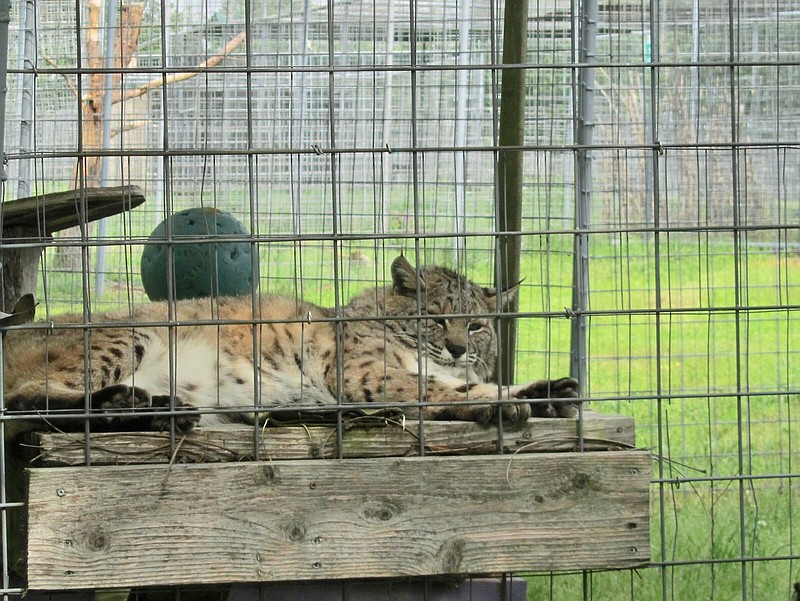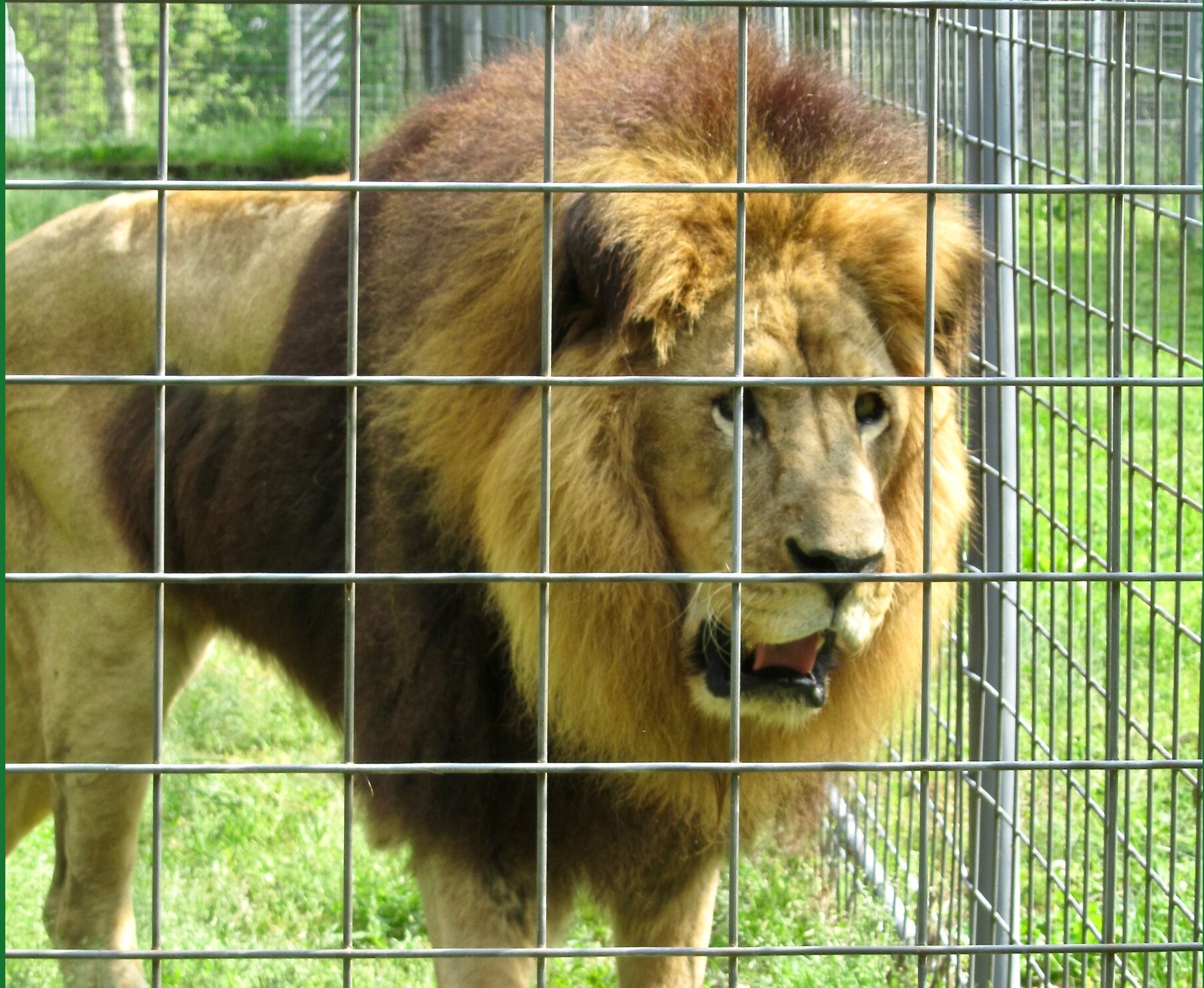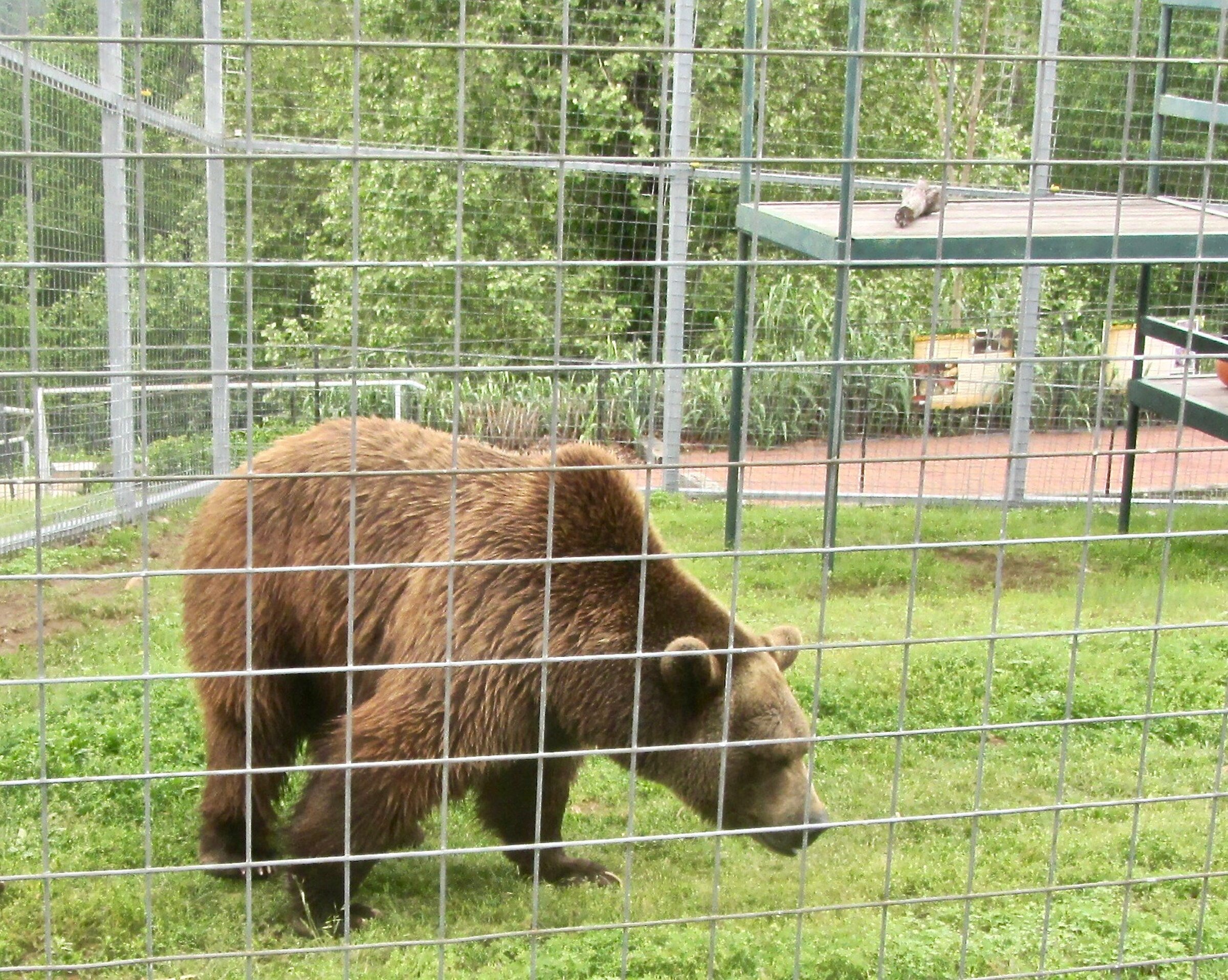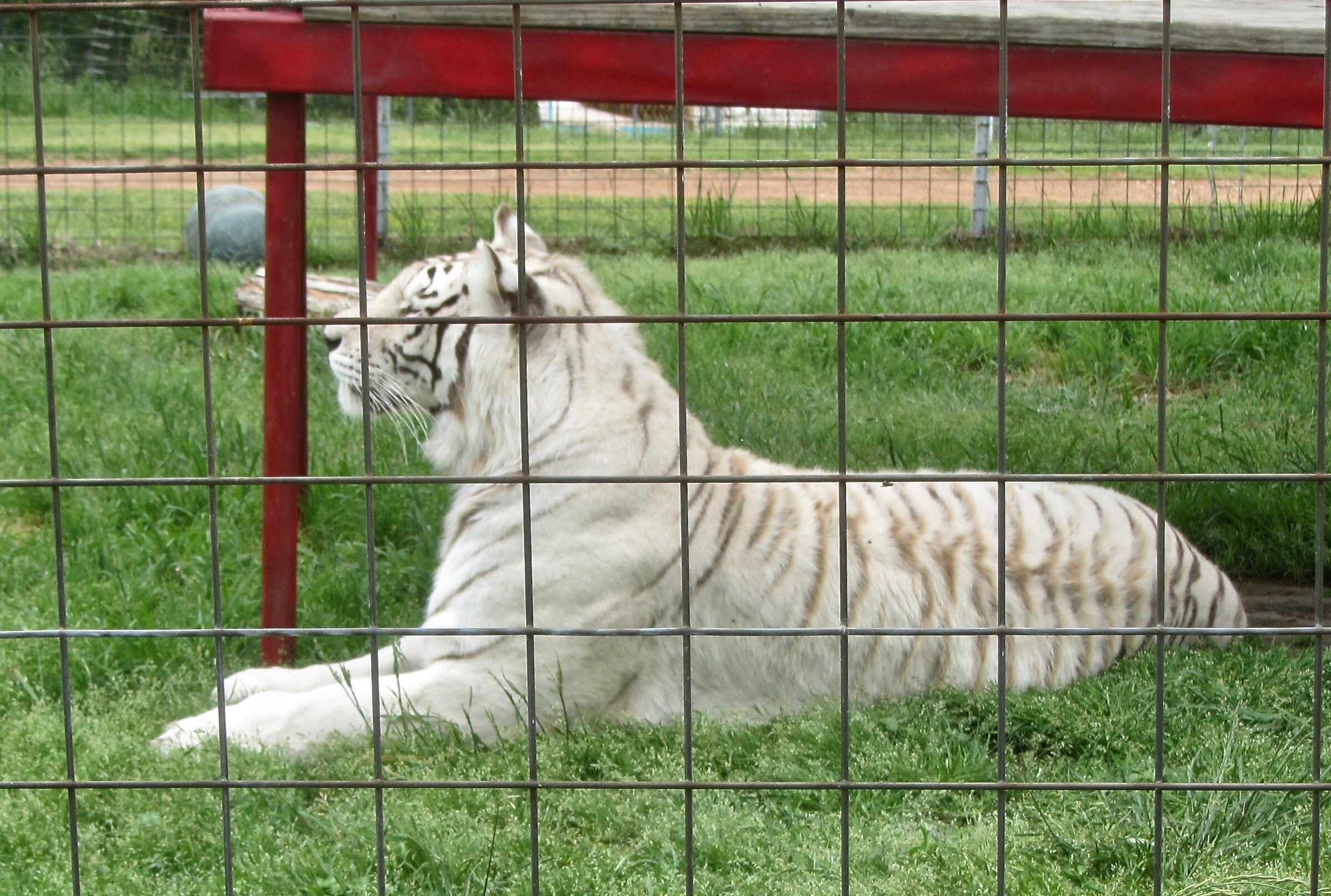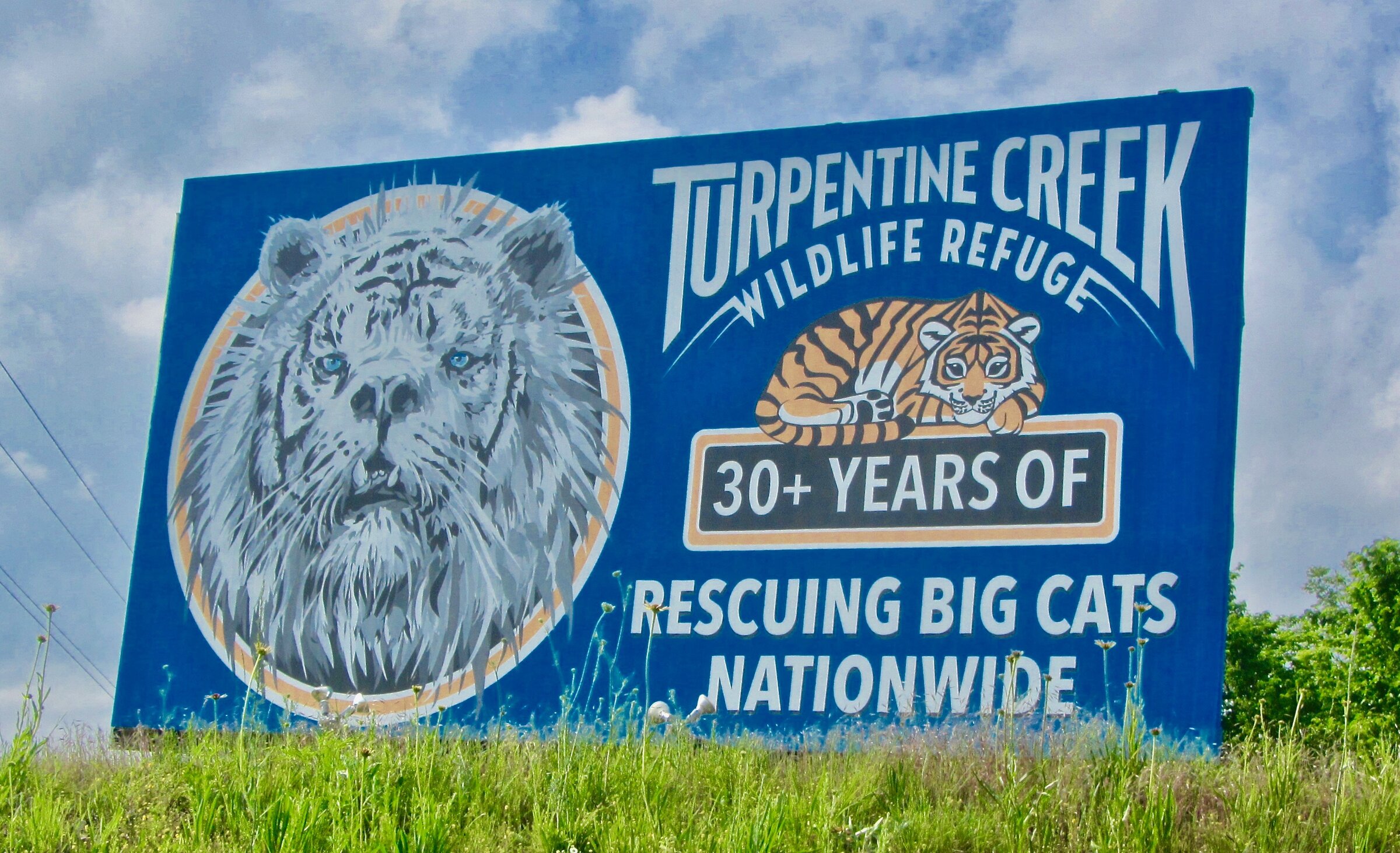TURPENTINE CREEK -- It's amazing to see 45 tigers all in the same place -- and even more incredible to find those big cats lovingly housed in Arkansas, seven miles south of Eureka Springs.
Adding to the marvel of Turpentine Creek Wildlife Refuge is the presence of other species: 10 African servals, eight African lions, eight bears, six bobcats, four tiger/lion crossbreeds, three cougars, two hybrid leopards, one jaguar and one hyena.
All 88 are rescued refugees. They're the latest among the more than 500 big cats and occasional other mammals nurtured here since Turpentine Creek was founded in 1992 by the site's President Tanya Smith and her parents, Don and Hilda Jackson. Their first rescued animal was a young lion named Bum, whose owner realized he couldn't care properly for the growing cub.
"To rescue is just the beginning," Smith says. "We provide these animals with a lifelong home and care. We rehabilitate them physically and mentally in a life of sanctuary."
Nonprofit Turpentine Creek ranks as one of the largest and most respected of the 11 accredited big-cat preserves in North America. It is also one of the most popular attractions in the tourist-oriented Eureka Springs area, offering daytime tours along with overnight accommodations. The Arkansas Department of Parks, Heritage & Tourism rates it as "Must See."
Later this year, the 459-acre refuge's animal population is due to swell above 100 with the arrival of 35 tigers and other species from Big Cat Rescue, operated in Florida by Carole and Howard Baskin. Turpentine Creek hopes to take in the new tigers by July and the rest of the animals by October.
Big Cat Rescue is helping fund Turpentine Creek's Freedom Field project, providing $1.8 million of the $2.5 million needed in part to expand for the arriving 35 cats. Turpentine Creek also intends the new space for an expected influx of animals in years ahead following President Joe Biden's December signing of the Big Cat Public Safety Act.
That federal law prohibits unlicensed people from owning, breeding and transporting such animals. It also forbids licensed exhibitors, mainly zoos and sanctuaries, from letting visitors touch the animals or hold cubs. The covered species include tigers, lions, leopards, cheetahs, jaguars, cougars and their hybrids.
"We are planning for the future by building out Freedom Field to accommodate any big cats that will need rescuing as the law is enforced," Smith says. "We expect there will be many animals that need our services. That is why we moved forward with our capital campaign."
That effort is part of a $6.5-million funding drive to build what Smith calls "the Next Generation of Animal Advocates," including a Big Cat Education Center and Museum. She says that pledges and donations stand at 52% of the goal.
The learning facilities are planned, says Smith, "because we realized a long time ago that education is the key to stopping the mistreatment of big cats and other animals. It's especially important that children learn respect for the natural world."
There evidently are more tigers kept captive by private owners in America than there are living in the wild in India and elsewhere in Asia. Many were acquired as cubs because they looked cute and cuddly, before beginning to grow toward adult size of as much as 600 pounds.
"People need to realize that these are predators, not pets," Smith says.
That is one message in the refuge's hourlong tram tours, conducted by well-versed guides who know the names and habits of the animals, housed in spacious and neatly kept enclosures.
Visitors learn that a major Turpentine Creek contributor is Tyson Foods, which donates 300,000 pounds of chicken annually. Local businesses and farmers also supply some of the 600 to 700 pounds of meat consumed here each day. And the sanctuary spends close to $80,000 a year for specialty meat and produce.
Looking into the future, Smith says, "Our hope is that as people are no longer allowed to breed these animals in captivity, for private ownership and cub-petting schemes, then we will no longer need to rescue big cats within the next 25 to 30 years.
"Once the big-cat crisis is over, then all the habitats we have here can be converted to accommodate any animals that need rescue. We expect that these people will turn to unregulated species like hyenas, bears, wolves and small exotic cats that are still wild by nature."
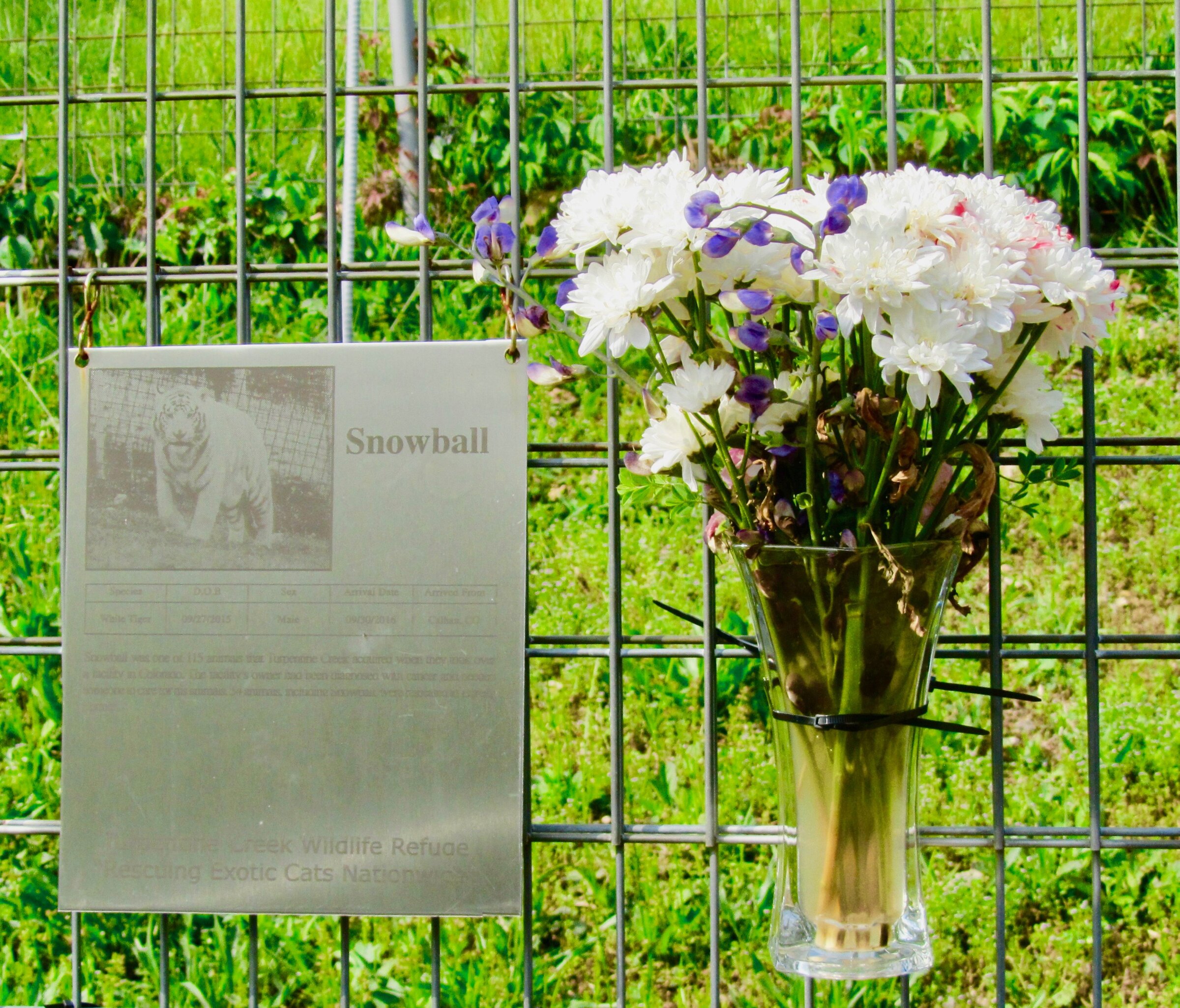 Flowers serve as a memorial to honor Snowball, a deceased big cat. (Special to the Democrat-Gazette /Marcia Schnedler)
Flowers serve as a memorial to honor Snowball, a deceased big cat. (Special to the Democrat-Gazette /Marcia Schnedler)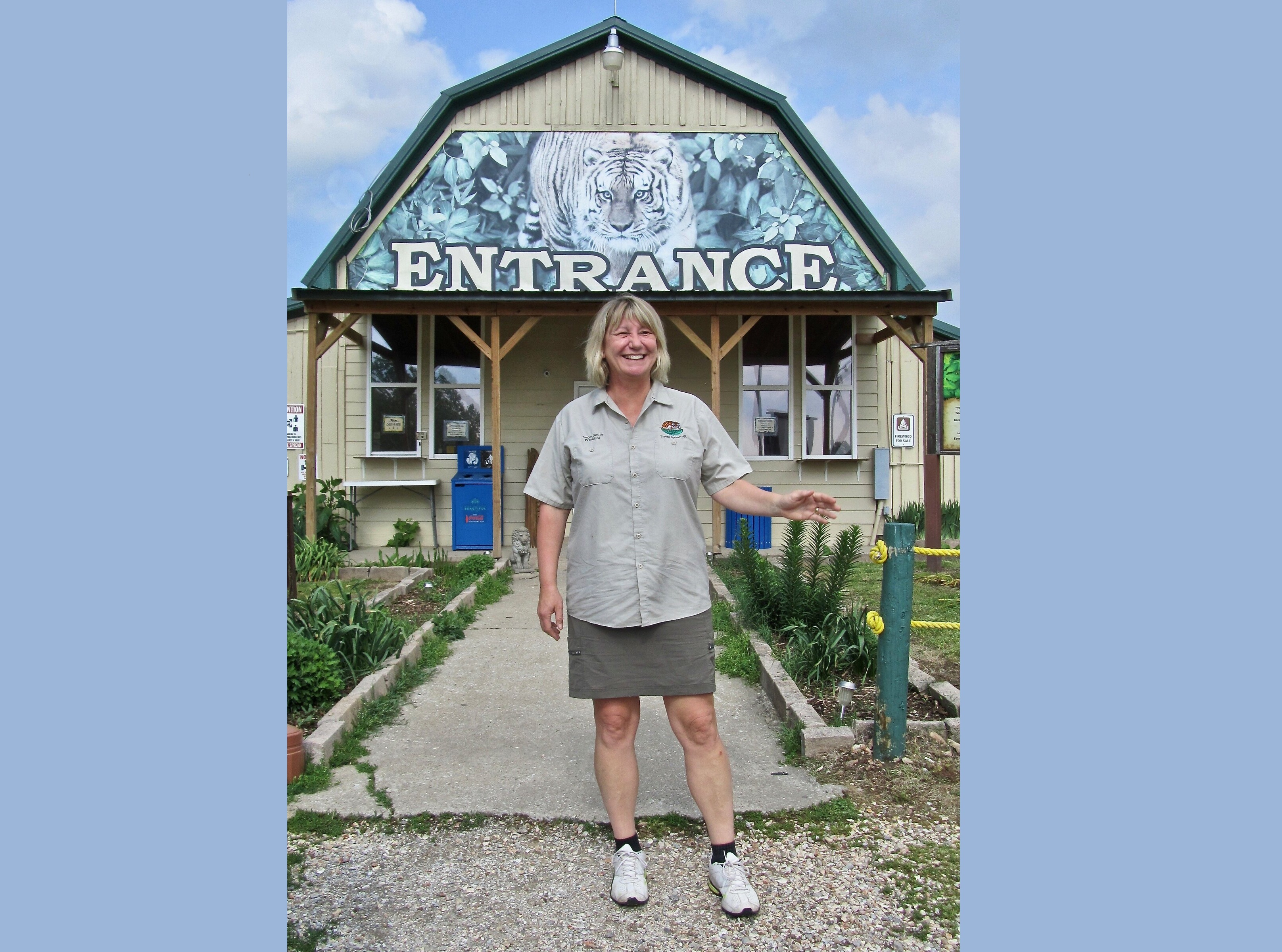 Tanya Smith is co-founder and president of Turpentine Creek Wildlife Refuge. (Special to the Democrat-Gazette /Marcia Schnedler)
Tanya Smith is co-founder and president of Turpentine Creek Wildlife Refuge. (Special to the Democrat-Gazette /Marcia Schnedler) The gift shop at Turpentine Creek sells animal-theme souvenirs. (Special to the Democrat-Gazette /Marcia Schnedler)
The gift shop at Turpentine Creek sells animal-theme souvenirs. (Special to the Democrat-Gazette /Marcia Schnedler)Turpentine Creek Wildlife Refuge
Where: Seven miles south of Eureka Springs on Arkansas 23
Hours: 9 a.m.-5 p.m. daily. The last hourly tram tour leaves at 4 p.m.
Admission: Tour prices are $32 for adults 20 and up; $20 for teens 13-19; $15 for children 4-12 and senior citizens 65-plus.
Information: turpentinecreek.org; (479) 253-5841
